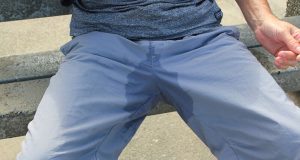By Dr. Virginia Nsitem
Pride Health Columnist
Do you have achy and sore legs? Do you have difficulty walking or standing for long periods of time because of leg pain? This article will discuss common conditions that cause leg pain. The following are common causes of leg pain:
- Arthritis: Arthritis in the lumbar spine can affect the joints and/or discs in the spine. Symptoms of degenerative joint or disc disease in the lumbar spine can include numbness and tingling in the legs.
- Spinal Stenosis: This is another form of arthritis in the spine that causes a narrowing of the spinal canal. Symptoms of spinal stenosis include numbness, tingling, pain, and weakness in the legs.
- Sciatica: Disc injuries such as a herniated disc can put pressure on the nearby nerves causing pain to radiate down the legs. This is called sciatica. Symptoms of sciatica can include numbness, tingling, and weakness in the legs.
- Tendonitis: Overuse injuries are often called tendonitis. Calf muscles and the Achilles heel tendon can become inflamed from repetitive or increased activity, causing lower leg pain.
- Knee joint injuries: Arthritis in the knee, damage to the cartilage in the knee, bursitis in the knee, tendonitis at the knee, and cysts at the knee can all cause pain at the knee and lower leg.
- Ankle and hip injuries: Joint and muscle injuries at the hip and ankle can also cause lower leg pain.
- Shin splints: Muscles attach to the edge of the bone in the lower leg. These muscles can become inflamed, especially when activities are performed on hard floors or surfaces. People that suffer from flat feet may be more at risk of developing shin splints if the arches of the feet are not properly supported.
- Muscle cramps: Episodes of intense muscle tightening and contraction can occur as a result of dehydration, exposure to heat, muscle tiredness, low minerals, and medication. Sometimes there is a complaint that the cramping occurs more often at night.
- Peripheral Artery Disease: The arteries in the lower leg can become hard, damaged, and narrowed. This results in decreased blood flow causing pain and cramping in the lower legs that is eased with rest. Risk factors of peripheral artery disease (PAD) include smoking, diabetes, high blood pressure, and high cholesterol.
- Other conditions: Other conditions such as bone fractures, infections, varicose veins, blood clots, and diabetes can cause lower leg pain and symptoms.
Treatment
Before you start therapy, you should see your chiropractor or family physician for a proper diagnosis. You may be referred for additional testing to confirm the diagnoses. Some of the conditions described above may only be treated with medication and/or invasive treatments.
Each condition has a specific treatment plan and conservative therapies may include chiropractic treatments, Laser therapy, soft tissue treatments, massage therapy, exercises, compression socks, orthotics, and lifestyle changes.
Dr. Virginia Nsitem is a chiropractor specializing in laser therapy for muscle, joint and nerve injuries, and is a Fellow of the Royal College of Chiropractic Sports Sciences in Canada. She may be reached at (905) 275-4993, or by email at totalhealth@bellnet.ca.
 Pride News Canada's Leader In African Canadian & Caribbean News, Views & Lifestyle
Pride News Canada's Leader In African Canadian & Caribbean News, Views & Lifestyle





